Welcome to the kick-off for my Everest 2018 coverage! I have already posted a few articles on 2018 and am actively covering both the Everest and K2 winter attempts so let me officially welcome you.
This will be my 17th season of all-things Everest: 11 times providing coverage, another 4 seasons of actually climbing on Everest and two years attempting Lhotse.
I did similar coverage for the 2004, 2005, 2006, 2007, 2009, 2010, 2012, 2013, 2014, 2015, 2016 and 2017 seasons. I summited Everest on May 21, 2011, and have attempted Everest three other times – 2002, 2003, 2008 and Lhotse in 2015 and 2016.
If you are one of my 3 million regular readers, hello again, if you are new, welcome!
My goal is to provide insight and analysis of what is going on up there with no favorites or agendas. I use sources directly from the mountain, public information plus my own experiences to write my posts.
Usually, I post once a day as the season gets started in early April and ramp up to almost hourly coverage during the intense summit pushes in mid to late May. I spend several hours a day to create these updates. You can sign up for (and cancel) notifications on the lower right sidebar or check the site frequently.
Why do I do this? Well, one word: Alzheimer’s. I lost my mom, Ida, and four aunts to this disease and it changed my life forever. You can read more at this link. I hope that you enjoy my coverage and make a donation to any of my selected non-profit partners as a tangible thank you. I never benefit financially from your donations. Just click on this button that is always on the top right sidebar.
2018 Overview
The interest in climbing Everest continues to increase with little impact from any bad publicity including deaths, risks or government policies. I anticipate another busy year on both sides with over 800 attempts and ten people attempting to summit without using supplemental oxygen. If the weather holds, there could be over 200 summits from the Chinese/Tibet (north) side and over 400 from the Nepal (south) side.
Sadly I believe 6 to 8 people will die on Everest this spring, mostly on the Nepal side from inexperienced climbers climbing with unqualified guides. This has been the pattern the past few years. Also, I expect to see record frostbite and helicopter “rescues” since the helicopter services are now controlled by Nepali guide companies and they make a significant profit from the insurance coverage of climbers and trekkers.
Speaking of supplemental oxygen, look for a few of the high-end guide companies to put members on 6 or even 8 liters per minute flow rates on the summit push. This trend is designed to increase the summit rates on so-called “rapid or speed” expeditions and members who want every advantage regardless of style issues. The normal flow rate is between 2 and 4 lpm.
Also look for more climbers than ever from China and India. As I’ve detailed in the past, China requires all Chinese Nationals to have a summit of an 8000-meter peak before climbing Everest from China so many simply go to Nepal where there are no rules. As for the Indian climbers, it has become folklore that if you summit Everest you can leverage that into fame and fortune – a huge miscalculation by so many – but many Nepal/India guide companies have come forth to meet this market demand.
As we enter the 2018 season, the Nepal government is making headlines by banning climbers with disabilities, specifically double amputees and blind climbers. There has already been an impact. Hari Buddha Magar, a former British Gurkha soldier who lost both legs in Afghanistan, postponed his Everest attempt a year hoping to persuade officials to allow him to climb.
They also banned solo climbing and repeated previous demands that all foreign climbers must hire local guides. Amazingly they clarified that all support staff who summit would receive a summit certificate. All of these new rules apply to all mountains in Nepal, including Everest. Finally, in a blatantly political move, authorities increased life insurance for the phony job of Liaison Officers.
I have written a lot about these decisions so in this post will come back to my bottom line: the Ministry of Tourism is only interested in money. The publicity they receive from headlines feeds their egos and does not contribute to climber safety. They continue to mismanage the world’s highest mountain like their own private bank. Eventually, climbers will have enough of this, stop supporting the government and move to the north side where the Chinese, while unpredictable, manage Everest with common sense and is safer.
A few months ago I took a hard look at the safety record of both sides but this time factored in the deaths that have occurred on the non-standard routes. It changed my thinking completely.
Of the 8,306 summits through 2017, only 265 climbers used a “non-standard” route in other words, not the South Col – Southeast Ridge or North Col – Northeast Ridge. There were 80 deaths on these routes – much higher than I thought there would be. This is 28% of the total deaths and a death rate of 2.12. The remaining deaths break out for the Northeast Ridge (Tibet) 71 or a death rate of .96 and for the Southeast Ridge (Nepal) 137 – a death rate of 1.11. Clearly, this shows climbing from the south side is more dangerous than from the north.
| ROUTE | DEATHS | RATE | % |
| Non-Standard | 80 | 2.12 | 28% |
| South Col – Southeast Ridge | 137 | 1.11 | 44% |
| North Col – Northeast Ridge | 71 | 0.96 | 25% |
| 288 | 1.24 |
Best of luck to all on any route this year. I hope the weather is a bit more stable than in 2017.
Everest: Years of Turmoil, Records and Summit Celebrations
Those who follow Everest closely never know what to expect each season. Some years, there is bad weather, then there are natural disasters like earthquakes and avalanches, other years the drama is manmade with men behaving like boys. Of course there are years that everything seems to go right resulting in record summits. One thing you can always assume is that there will always be deaths on Everest.
Let’s take a quick trip down memory lane and review the past few years:
2010: A Safe and Successful Year
By historic standards, Everest 2010 was a safe and successful year. There were about 537 summits (347 from the south) with 3 reported deaths, all on the north, and several injuries and rescues. The total Everest summits broke the 5,000 level since the first summit in 1953.
The storyline for climbers and their families was the weather, however it was all Jordan Romero and Apa Sherpa for the rest of the world who became the youngest to summit and broke the record for most summits respectively.
For the first time in several years, the north operated in an almost normal manner. Teams dealt with a few border restrictions early but arrived at base camp and immediately began their acclimatization rotations. On the South, the ropes were in early and the weather seemed drastically different from the North, at least in April. Read my season recap here.
2011: Alan Finally Summits and a Normal Year
Please forgive my narrow scope for this year but after three previous attempts, I summited Everest on May 21, 2011 from the Nepal side Kami Sherpa of International Mountain Guides. This was part of The 7 Summits Climb for Alzheimer’s: Memories are Everything® campaign. It was very humbling standing on the summit after all my attempts but more gratifying was the reaction to my Alzheimer’s awareness and fundraising efforts. Thank you everyone who participated.
I approached this climb quite differently from previous attempts including preparation, training, guide service and more. The season was fairly normal with good weather and manageable crowds and no natural disasters.
The Himalayan database states there were 535 combined summits from both sides 58% summit to climbers at base camp. There were 4 deaths. Read more about my summit at this link.
2012: Himex Cancels Expedition, Narrow Window Increases Crowding
Perhaps the most dramatic year since 1996. A lack of snow combined with high winds created dangerous rockfall on the Lhotse Face causing many injuries primarily to Sherpas before the route was moved to a safer passage to Camp 3. However, these dangers plus the deaths of three Sherpas early in April from multiple causes caused the Sherpas from Himex to lose confidence. Russell Brice, arguably the most famous of the Everest commercial operators, canceled his entire Himalaya spring season (Everest, Lhotse, and Nuptse) taking over 100 people off the mountain. It was an unprecedented decision.
The other teams continued fighting difficult weather on both sides of Everest and with only four days of suitable weather for summit pushes endured the famous crowds at the normal bottlenecks of the 2nd Step, and the Hillary Step. Totally unrelated to the crowds, weather or rockfall, 6 more climbers died primarily from poor decision making or altitude related illnesses generating sensational headlines around the world and calls for regulation on Everest. The Himalayan database states there were 551 combined summits from both sides and 10 deaths. Read my season recap here.
2013: A Normal Year and a Petty Fight on the Lhotse Face
Everest 2013 was a good year for most climbers but a difficult one for the professionals. Overall it could be termed a normal year with little drama with one large exception. There were an estimated 658 summits in the spring of 2013, 539 on the south and 119 on the north. 8 confirmed deaths. This was the most summits in the history of Everest including to 2016.
2013 brought the inexcusable behavior of both Sherpas and professional climbers arguing and fighting about who had the right to climb on the Lhotse Face while the fixed ropes were being set for the commercial teams. This incident, in my opinion, accelerated the creation of Sherpa owned guide services that are beginning to dominate Everest.
For many climbers, they accomplished a lifelong dream, returned safely home to a family who have started to breathe again. With an unparalleled lifetime experience, for some their lives were changed forever. Read my season recap here.
2014: 19 Deaths and Nepal Side Closed
The Everest 2014 season was full of tragedy with 19 deaths from an ice serac release off the West Shoulder of Everest onto the Khumbu Icefall. Shameful exploitation and thin coverage of the real story by the general media created unnecessary drama where the focus should have been on the victims and their families.
In my season summary, I look at what happened, the reasons for effectively closing Everest from Nepal, the roles played by all parties and some ideas on a credible path forward. The summary is not a sound bite, it is long, complicated and will take time to digest. Just like anything with Everest it will evoke emotions and reactions. My hope is for badly needed changes on Everest. A mountain I value and whose climbers I admire – past, present and future.
There were 121 summits from the North and 4 from the South. There were 19 deaths on the South. Read my season recap here.
2015: 18 Deaths, an Earthquake and NO Summits
Another tragic season but this time due to an earthquake, not climbing events. 19 people were killed at Everest Base camp from an avalanche off the Pumori -Lingtren Ridge then the Chinese closed the North fearing aftershocks. Nepal continued to promote climbing but no team wanted to risk going back through the Icefall. For the first time since 1974, there were no spring summits on Everest from any route, any camp by any means. I was at Camp 2 in the Western Cwm attempting Lhotse when the earthquake struck. Read my season recap here.
2016: Back to Normal but Inexperience Reigns
Everest 2016 was a success by many measures. Climbers achieved life long dreams and a country got a break. It was a ‘normal’ season with 640 summits but sadly there were five deaths plus one on Lhotse. However in stark contrast to the previous four years on Everest, 2016 lacked large scale tragedy or extreme drama.
The emerging trend of low cost expeditions continued and many (not all) of the deaths had the marking of inexperience, insufficient support and low prices this year. While I cannot verify all the statements made in this report of three Indian climbers who lost their lives in 2016, the article, An Avoidable Tragedy, is illustrative of the risks and well worth a read. Read my season recap here.
2017: The Weather Gods Must Be Angry
This is one of the more difficult seasons I have covered and impossible to sum up in one word so let me use several: wind, tragedy, misinformation, spin and summits. The wind played havoc on the south side while the normally windier north was almost tranquil with a few serious exceptions. A report of four dead at the South Col turned out to be thankfully incorrect and no one took responsibility for the misinformation. The newspaper that reported it shrugged their shoulders suggesting that poor reporting was normal and this was Nepal.
In 2017 there were 648 summits, 237 from Tibet and 411 from Nepal and 11 didn’t use supplemental oxygen. There were 6 deaths, 3 didn’t use Os and only 1 died on the descent. Read about Everest 2017
Cost to Climb Everest
As I covered in my annual “How much does it cost to climb Mount Everest – 2018 Edition” post, look for prices to be higher overall but still deals to be found attracting experienced climbers.
The headline for 2018 is that prices went up at the low-end and ultra high-end. Climbing from China saw the largest overall increases again this year but the increase is driven by a few high-end companies trying to differentiate their product.
In 2018, it remains slightly less expensive to climb from Tibet whether guided or unguided, except with the ultra high-end western companies. The median price is $41,500 from Nepal and $38,500 from Tibet.
The price range for a standard supported climb ranges from $28,000 to $85,000. A fully custom climb will run over $115,000 and those extreme risk takers can skimp by for well under $20,000. Over the past five years, companies have increased their prices by 6% on the Nepal side and 12% on the Chinese side.
Recently, the low cost Nepali operators were getting a foothold in the market by competing on price but now realize they were leaving money on the table and have started to increase their prices. That said, they will make you a deal unlike most western operators who sell out quickly.
Guided climbs on Everest is like any competitive marketplace, it’s driven by supply and demand and the demand is huge! As I’ve noted for years now, more and more Everest climbers are coming from India and China adding to the historic demand from the Americas, Europe and Southeast Asia. Meeting that demand are many Nepal based guides. China is making huge moves to capitalize on the tourist demands from their own country which will add to the crowding.
Bottom line: Look for Everest to become more crowded, more expensive over the next five years, regardless of which side you climb, and six to eight people to lose their life each year – more on the south side due to more people climbing that side.
Summit Statistics
Another popular post is my Everest by the Numbers – 2018 edition The Himalayan Database reports that there have been 8,306 summits (4,333 members and 3,973 hired) of Everest through June 2017 on all routes by 4,833 different people. 1,106 people, mostly Sherpa, have summited multiple times. There have been 539 summits by women. The Nepal side is more popular with 5,280 summits compared to 3,026 summits from the Tibet side. 208 climbers summited without supplemental oxygen, about 2.5%. 32 climbers have traversed from one side to the other. About 63% of all expeditions put at least one member on the summit.
288 people (173 westerners and 115 Sherpas) have died on Everest from 1924 to June 2017, about 3.5%. 71 died on the descent after their summit or 25%. 11 women have died.The Nepal side has 181 deaths or 3.4%, a rate of 1.27. The Tibet side has 107 deaths or 3.3%, a rate of 1.15. Most bodies are still on the mountain but China has removed many bodies from sight. The top causes of death were from avalanche (77), fall (67), altitude sickness (32) and exposure (26).
In 2017 there were 648 summits, 237 from Tibet and 411 from Nepal and 11 didn’t use supplemental oxygen. There were 6 deaths.
From 1923 to 1999: 170 people died on Everest with 1,169 summits or 14.5%. But the deaths drastically declined from 2000 to 2017 with 7,056 summits and 118 deaths or 1.7%. However, two years skewed the deaths rates with 17 in 2014 and 14 in 2015. The reduction in deaths is primarily due to better gear, weather forecasting and more people climbing with commercial operations.
Of the 8000 meter peaks, Everest has the highest absolute number of deaths at 288 but ranks near the bottom with a death rate of 1.23. Annapurna is the most deadly 8000er with one death for about every three summits (71:261) or a 3.91 death rate. Cho Oyu is the safest with 3,681 summits and 50 deaths or a death rate of 0.55.
Himalayan Database
I use the Himalayan Database as my primary source of Everest summit statics. If you are climbing in 2018, they are asking you to fill in an electronic web-based survey. This replaces the time consuming process of visiting each team in their hotel before the climb. Please use this link to complete the survey. You can now download the HDB for free at their site.
Follow Along!
I have begun to create my annual team location table and tracking climber’s blogs (see sidebar). If you have a team not listed, please let me know and I will add them if I can track them. If you prefer not to be mentioned, please contact me.
I will post a few background articles and interviews between now and early April when the teams arrive at the base camps. If you would like to see anything special this year, post a comment or drop me an email.
Here’s to a safe season for everyone on the Big Hill.
Climb On!
Alan
Memories are Everything
 If you dream of climbing mountains but are not sure how to start or reach your next level from a Colorado 14er to Rainier, Everest or even K2, I can help. Summit Coach is a consulting service that helps aspiring climbers throughout the world achieve their goals through a personalized set of consulting services based on Alan Arnette’s 20 years of high altitude mountain experience and 30 years as a business executive.
If you dream of climbing mountains but are not sure how to start or reach your next level from a Colorado 14er to Rainier, Everest or even K2, I can help. Summit Coach is a consulting service that helps aspiring climbers throughout the world achieve their goals through a personalized set of consulting services based on Alan Arnette’s 20 years of high altitude mountain experience and 30 years as a business executive.
Everest Pictures and Video
© all images owned and copyrighted by Alan Arnette unless noted
A tour of Everest Base Camp 2016

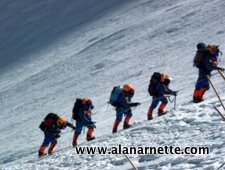




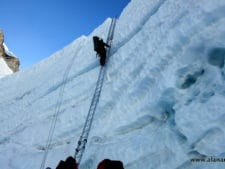



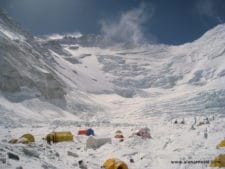







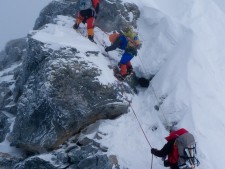
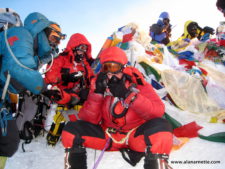



5 thoughts on “Everest 2018: Welcome to Everest 2018 Coverage”
Hi Alan will be up at Base camp early May. Am trecking high passes route and staying at ebc for 2 nights.
Would love to climb but unfortunatly finances and work dont allow.
Looking forward to reading your blogs.
Enjoy Steve!
Thanks, Alan. Excellent and informative, as always.
Alan –
Early in this post you speak about the allure for fame and fortune that apparently wait for Indian climbers who summit Everest. You may have already caught the below article that appeared in the New York Times last month but if not, it is a lengthy but very well written piece told from a perspective that has only been touched on in past articles and books. I would recommend that you view/read it on a computer as the pictures and interactive segments are stunning and need a larger screen to be truly appreciated.
https://www.nytimes.com/interactive/2017/12/18/sports/everest-deaths.html
I’ve been an avid reader for years, made it to EBC in 2009 and managed to summit Aconcagua in 2013 but this is my first post. Regrettably, my days of high altitude climbing are probably over but I continue to hold onto the dream. Hope you can check Lhotse’s box off soon. Best wishes, thanks for all the great work you’ve done and continue to do.
Stephen
Thanks Stephen. Yes I saw the NYT article and agree well done on a tragic story. Sadly the real lessons in that piece will be missed by many.
Comments are closed.